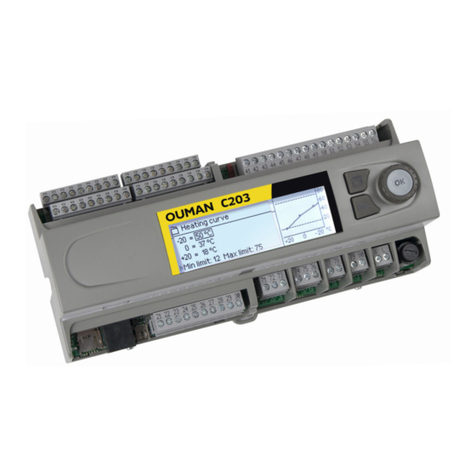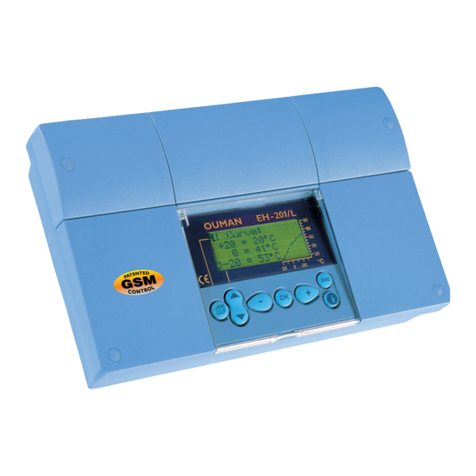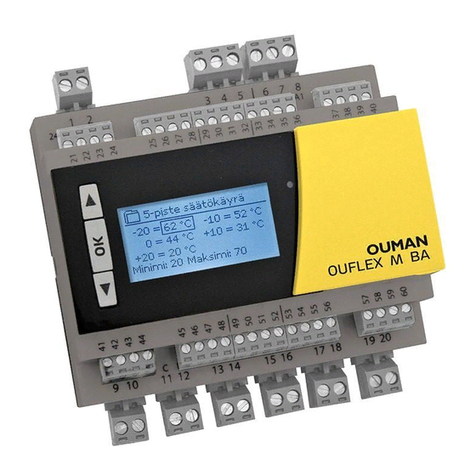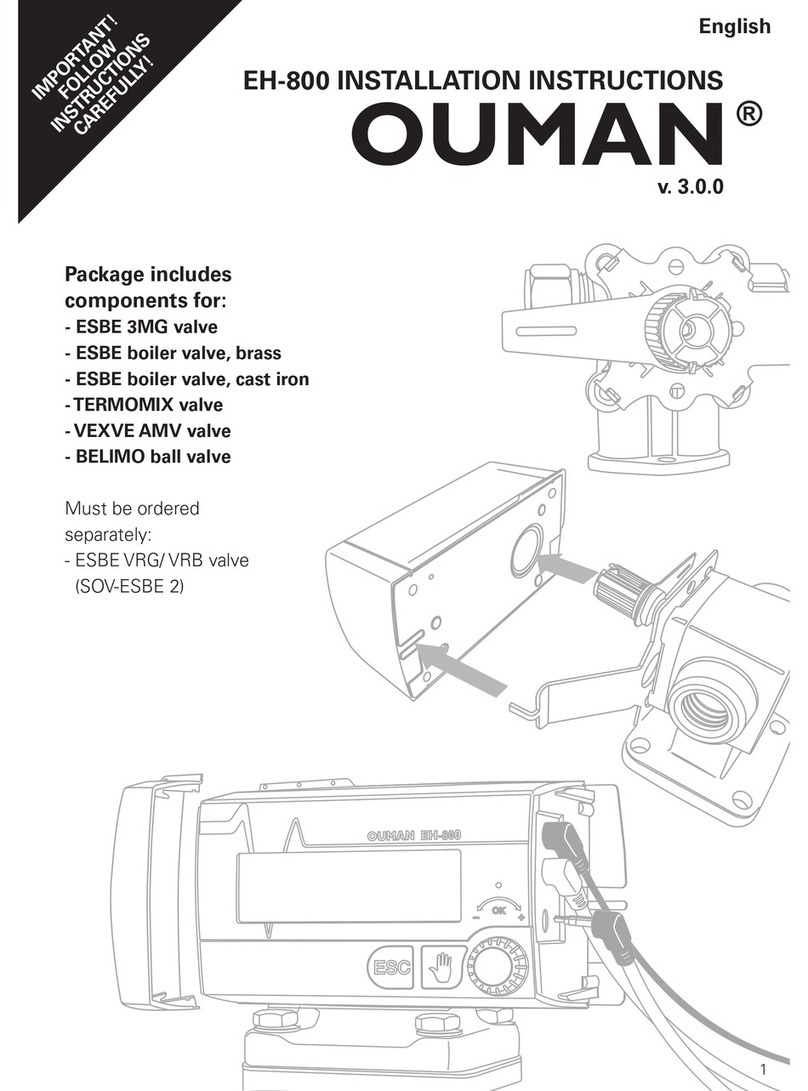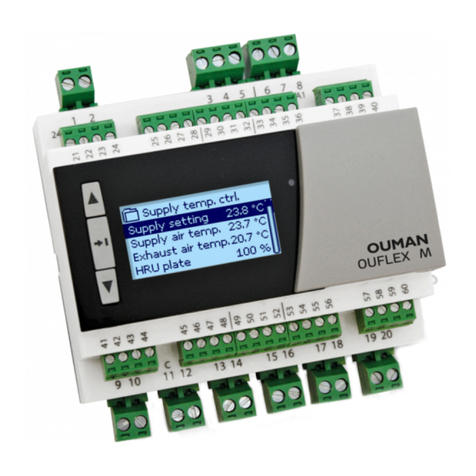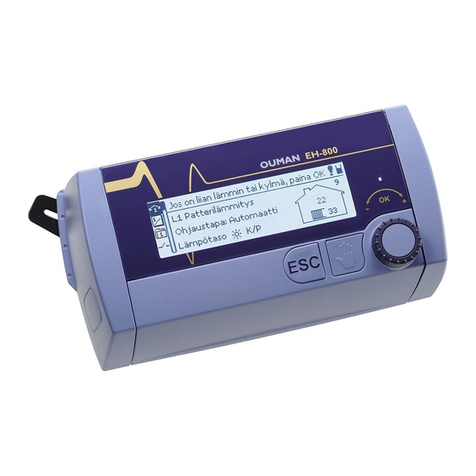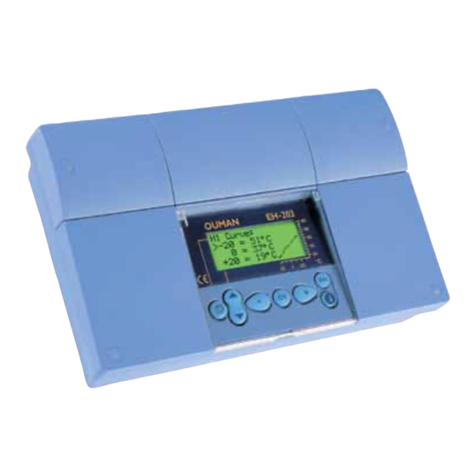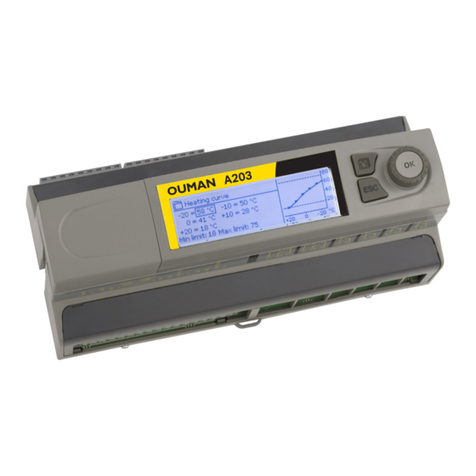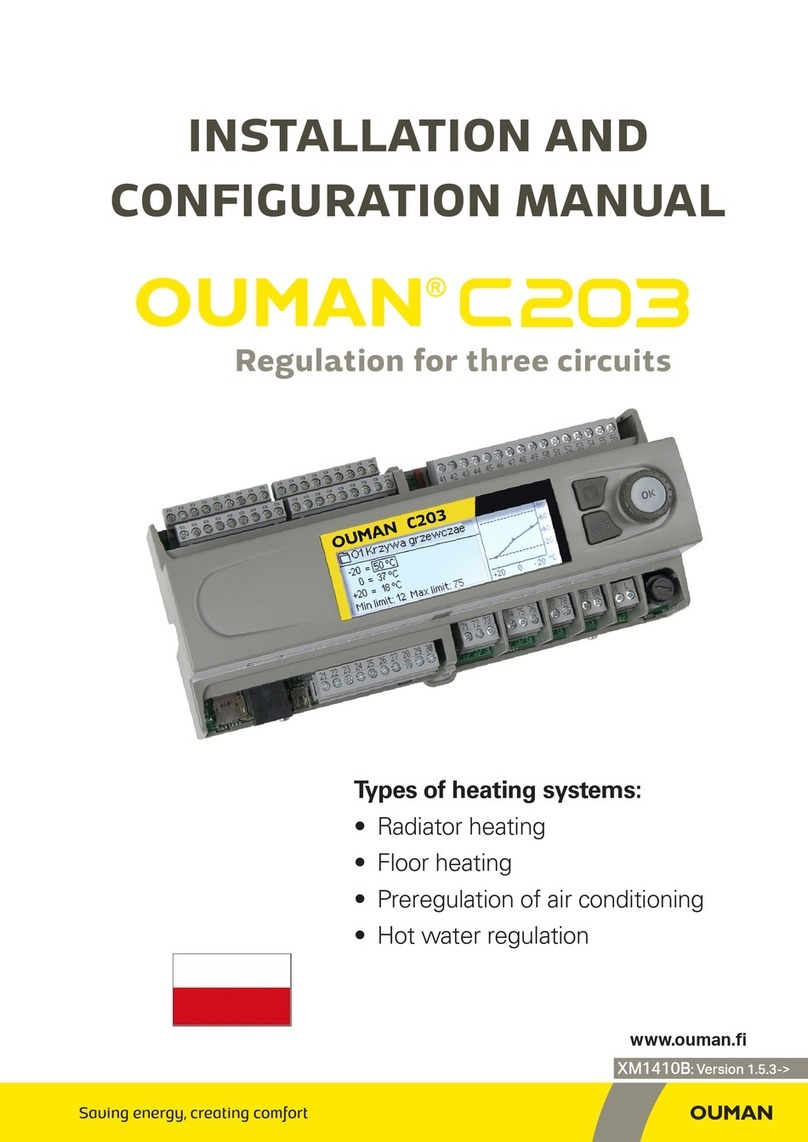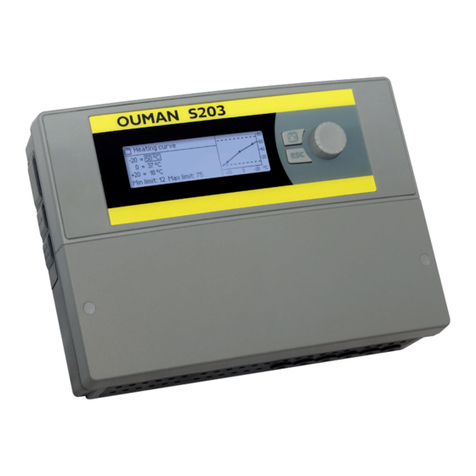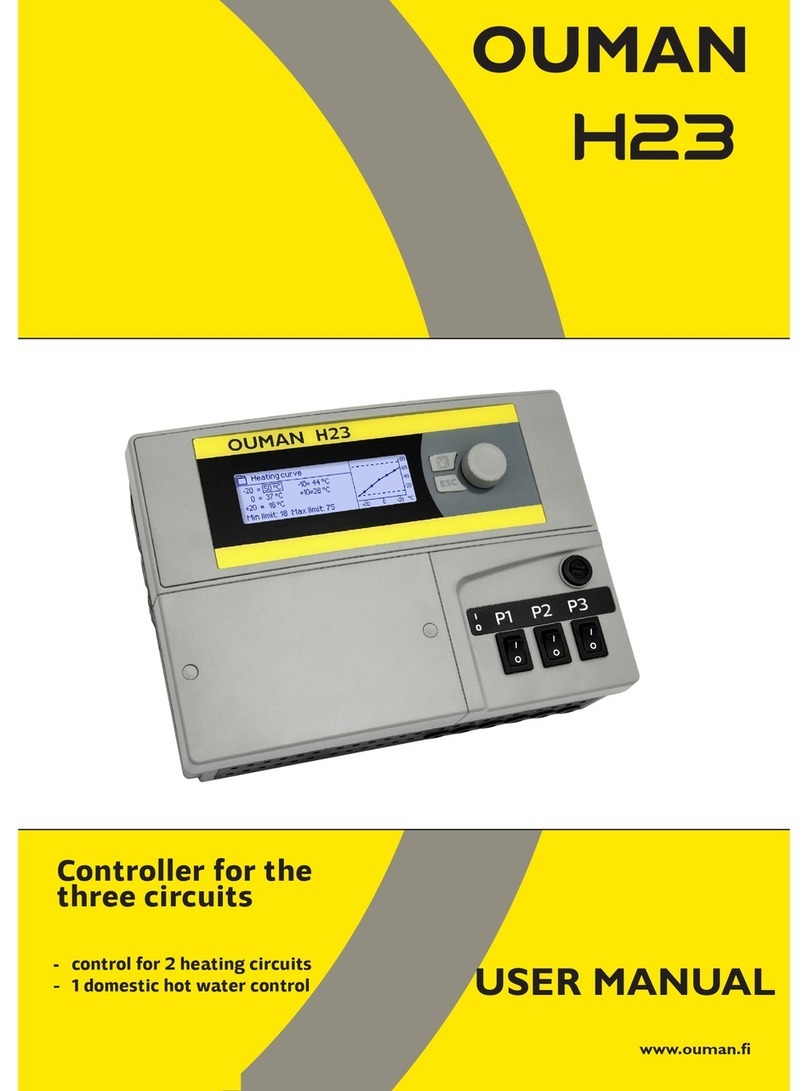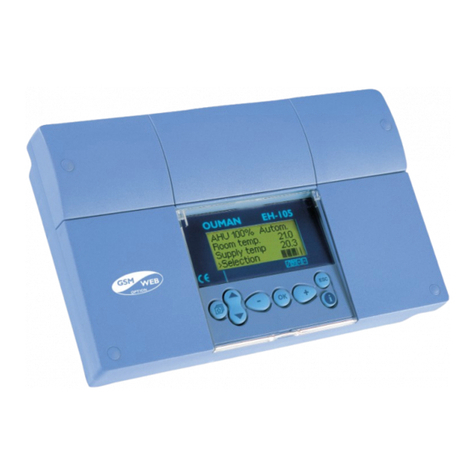7
2 Measurements (Pomiary)
You can see the measurements and mode information linked to the
C203. When you press OK on the measurement row, you can see
the measurement’s trend or trend log, change the settings of the
trend log and change the name of the measurement.
General measurements are informational temperature measu-
rements with names set by the factory for a particular use. The
general measurement can also be put to a dierent use and be re-
named.
If the sensor is not connected or is defective, the measurement va-
lue shown will be -50 or 130 °C.
You can also see circuit-specific measurements under each circuit.
Pomiary
Home-Away mode (Dom/ Tryb zdalny). By pressing OK you can change the
status of the Home/Away mode from the regulator.
Menu główne
Pomiary
O1 Układ sterowania
O2 Układ sterowania
C.W.U. Sterowanie
>
>
>
>
Pomiary
Sterownie lokalne/zdalne Dom
Temp. zewnętrzna -18.2 °C
----------------------------------------------------
O1 Woda zasilająca 35.1 °C
O1 Powrót wody 22.0 °C
O1 Temperatura pokojowa 21.5 °C
O1 Sterowanie siłownikiem 22 %
----------------------------------------------------
O2 Woda zasilająca 28.1 °C
O2 Powrót wody 21.1 °C
>
>
>
>
>
>
>
>
>
>
If a GSM is connected to the controller, you can read measurement informati-
on form a mobile phone.
Send a message: Pomiary (Measurements)
The controller sends the present measurement information to your mobile
phone. (If you have a device ID, write the device ID in front of the key word,
e.g., Ou01 Pomiary)
Pomiary:
Temp. zewnętrzna = -18.2 °C /
O1 Woda zasilająca = 35.1 °C/
O1 Powrót wody = 22.0 °C / O1
Temperatura pokojowa = 21.5
°C /O2 Woda zasilająca = 35,7 °C/
Pomiary
Pomiary→ ”Select measurement, press OK” → Obraz trendu
When you press OK on ”measurement,” a menu for viewing trends and chan-
ging settings will open. You can also use the menu to rename a measurement
to better describe what is being measured.
Measurement channels continuously monitor trends. Trends show measure-
ments from the past 45 seconds. The measurements displayed are updated at
one-second intervals.
2.1 Obraz trendu
Obraz trendu 28.01 08:26:19 [ 34.7 °C ] ( s )
38
28
Factory settingSetting Information about settingRange
Włącz dziennik trendu
Nazwa pomiaru
Dziennik trendu
– interwał próbko-
wania
Zapis dziennika trendu
Auto. zapis dziennika
trendu
The trend log can hold 2,000 measurement samples. The regulator produces a
separate trend log for each measurement.
You can change the name of the measurement shown in the display. If the measu-
rement is circuit-specific, the identifier for the circuit appears before the measure-
ment, e.g. O1 (=H1).
A dierent sampling interval can be set for dierent measurements. The memory
can store 2,000 measurement samples. For example, if the sample interval is 60
seconds, the trend buer will contain measurement information for 33 hours. If the
sampling interval is 1,800 seconds (30 minutes) the buer will contain measure-
ment history for 41 days.
The trend log can be saved to a memory stick. A csv file is created on the memory
stick, which is named according to the point measured. For example, the trend log
for outdoor temperature is saved in a file named UI1.csv.
You can set the regulator to automatically create a csv file at the intervals
that have been set and forward the data to M-LINK (additional equipment). If
the trend log becomes full before the interval for saving data has passed, the
regulator will save the data immediately when the log is full (2,000 measure-
ments).
Nieużywany/
20 minut/
1 godzina/
6 godzin
Woda zasilająca
60 s
Nieużywany
Nie Nie/Tak
Obraz trendu
Dziennik trendu
Press OK to view trends. The trend view is updated at one-second intervals, so the
measurement can be monitored in real time.
From there you can view the trend log if the trend log is turned on. The trend log
is not shown in real time, i.e. the view is not updated in real time. The interval for
trend-log monitoring can be changed and the log can be saved to a memory stick.
Nazwa pomiaru
Potwierdź: Przytrzymaj OK
Anuluj: Przytrzymaj ESC
o
Wd a z a s i l ąacj a






